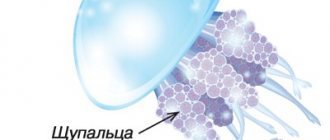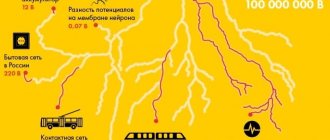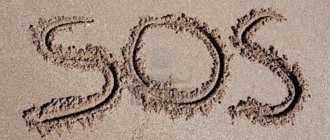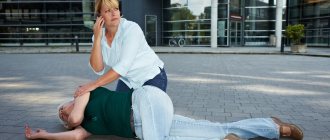After long cold days, each of us happily plunges into the embrace of hot summer. However, the sun brings not only pleasure, but also serious health complications.
Sunstroke and heatstroke are similar in manifestations, but they cannot be considered identical concepts.
Heat stroke occurs under the influence of several factors:
- Stuffiness in rooms that are not ventilated;
- The air temperature exceeds the temperature of the human body;
- At a relatively stable air temperature, heavy physical activity is performed.
Whereas sunstroke occurs due to the direct impact of the sun's rays on the body, in particular the human head.
Indulgence in alcohol, fatty, poorly digestible foods, as well as excess weight, clothing made of synthetic fabrics, and taking medications increase the occurrence of hyperthermia several times.
If the correct actions are not followed during first aid for heat and sunstroke, changes in metabolism in the body are observed, which will result in loss of sensitivity and disturbance of consciousness. Paralysis or death is even possible.
Based on the above, it is obvious that everyone should be well versed in the question of how to provide first aid for heat and sunstroke.
Features of manifestation
In case of heat injury, there are 4 forms of manifestation of the body's reaction. Symptoms and first aid depend on their characteristics.
- 1st degree: absolute adaptation. Appears within 40 degrees of air heating. The heat transfer of the human body is identical to the load that a person receives. There is a feeling of drowsiness and lethargy, while the patient’s temperature remains unchanged.
- 2nd degree: incomplete adaptation. Temperature changes reach 50 degrees. Heat begins to accumulate in the human body. Temperatures rise to 38 degrees, the upper pressure increases and the lower pressure decreases. The pulse quickens, there is increased sweating, the skin turns red, and the patient feels intense heat.
- 3rd degree: failure of the device. The appearance of grade 3 is caused by an air temperature of 60 degrees. Signs of overheating are obvious and dangerous: the upper readings of the tonometer continue to rise, while the lower ones are rapidly falling down. A person's temperature reaches 40 degrees. The heart rate increases, the skin becomes bright red, and heavy sweating occurs. A person feels a pressing sensation in the temples, nausea or vomiting, and anxiety appear. Possible loss of consciousness.
- 4th degree: no device. Accompanied by confusion, hallucinations, and possible seizures. Temperatures are reaching critical levels. Emergency assistance for heatstroke of this degree should be provided immediately, since at this moment sharp fluctuations occur in the functioning of all systems of the human body.
Note!
The last degree of overheating can also occur at a sufficiently low temperature. After all, poor health depends on the time of thermal influence on the body.
In children, pregnant women and the elderly, the risk of hyperthermia is several times higher. Therefore, the provision of first aid should take into account the characteristics of the body of this category of people. Having psychological support is also very important, especially if a child has heat injury.
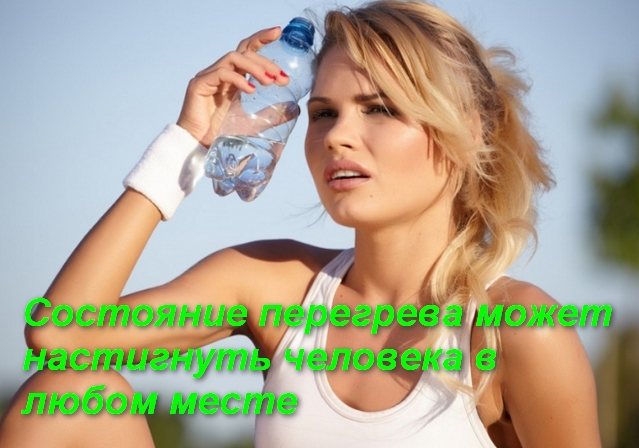
Causes
Sunstroke occurs when you are exposed to the bright active sun for a long time with your head uncovered. In this condition, the likelihood of disorders in the brain sharply increases, which becomes the cause of a painful condition with vivid symptoms.
The risks of getting sunstroke will be higher in the following cases:
- the presence of diseases of the heart and vascular system in a person, for example, heart defects, increased blood pressure, and also when the patient has endocrine abnormalities, signs of vegetative-vascular dystonia;
- when a person is under the sun in a state of alcoholic or drug intoxication, since it affects the blood vessels of the brain;
- smoking abuse;
- insufficient fluid intake in hot weather, which provokes rapid dehydration;
- non-compliance with safety rules on hot days and abuse of heavy physical activity;
- prolonged stay in a body of water or above its surface;
- increased environmental humidity;
- obesity;
- psycho-emotional overload, stressful conditions.
Children and older adults are more likely to get sunstroke. This is due to the characteristics of the body of such patients and the inability to effectively conduct heat exchange and regulate these processes.
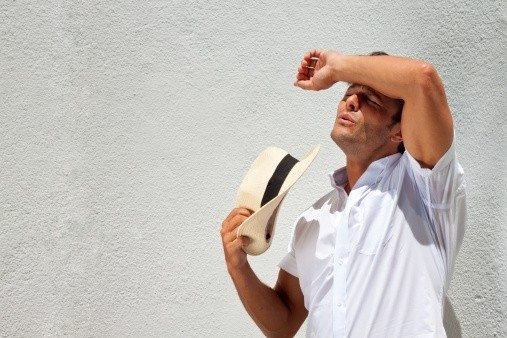
Heat damage and its elimination
We have already pointed out the difference between heat damage to the body and dangerous exposure to sunlight. In the first case, attacks occur less frequently, but their consequences pose a serious threat to the health of the victim. Therefore, when providing first aid for heatstroke, all actions must be performed sequentially in order to alleviate symptoms and eliminate complications.
A state of overheating can overtake a person anywhere: on the street, in the office, on the bus. At the same time, poor health takes you by surprise - the victim will not be able to help himself! Therefore, everyone should have knowledge of what first aid for heat stroke consists of.
So, first aid for heatstroke includes the following actions:
- Take the person out from under the scorching rays of the sun to a place where there is shade and coolness;
- Keep your legs elevated;
- Take off the patient's clothes, unfasten the pressing parts of clothing;
- Check whether the patient's pupils react to light and whether the pulse is palpable. If a state of fainting is detected, resuscitation measures must be provided, which include immediate heart massage and artificial respiration.
- Soak a towel or any other available material in water and wipe the patient’s body with it;
- In a clear consciousness, a person must be given as much liquid as possible to drink.
It is important! What not to do in case of sunstroke and heatstroke: Under no circumstances should you cool your body with ice water; The victim should not drink alcohol or drinks containing caffeine.
If fainting occurs due to heat or sunstroke, first aid includes the use of ammonia. It is poured onto a piece of cotton wool and brought to the patient’s face.
If, at the time of providing first aid for sunstroke and heatstroke, ammonia did not help, and the victim is in a faint or semi-fainting state, you should use another method.
Raise the person's hand up. Raise the leg opposite your hand and bandage it very tightly, starting from the toes and ending with the thigh. After 10-15 minutes, do the same actions with opposite limbs.
What to do next in case of heatstroke will be determined by doctors, who must be called.
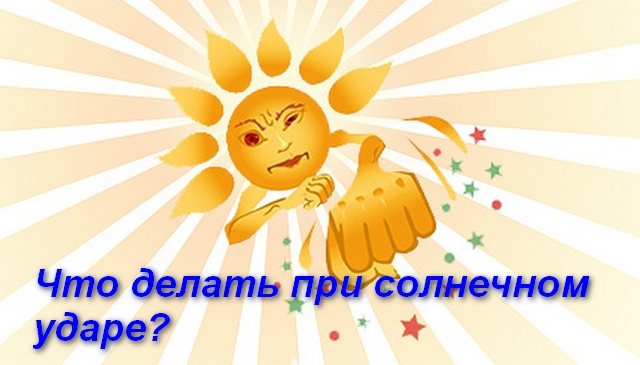
What is sunstroke

This disorder of the body is a frequent companion of hot summer. Symptoms in adult patients may vary, but prompt assistance to the victim and initiation of treatment are required. If the sun's rays are exposed to the body for a long time, then significant overheating begins to appear, since the body does not have the ability to carry out effective heat exchange.
This problem is especially typical for young children, because... their body is deprived of the ability to quickly and completely regulate heat exchange. It is not surprising that they quickly overheat.
Sunstroke is the body's reaction to significant overheating due to direct rays. This exposure causes serious consequences that often exceed the complications from heat stroke. Being a variety of it, sunstroke is considered as a painful condition caused by abnormalities in the functioning of the brain. In such a situation, cerebral edema is likely, and due to the rupture of small vessels, hemorrhages appear. This provokes disruptions in the functioning of the central nervous system.
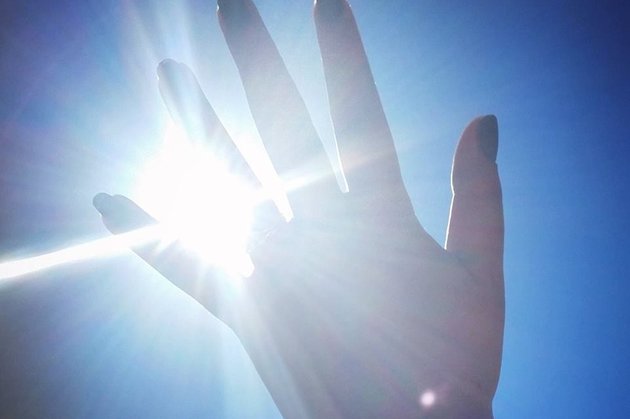
What are the dangers of sun exposure?
First aid for sunstroke should be urgent.
Overheating causes weakness, nausea or vomiting, nosebleeds, and a feeling of dizziness. The number of pulse beats increases. General malaise most often causes fainting. Therefore, during the period of providing first aid for sunstroke, you should immediately call medical workers.
What to do if you have sunstroke before the doctors arrive?
- Take the patient to the coolest place possible;
- Free him from clothes, belts, shoes;
- Raise your legs and fix them in this position;
- Wrap the victim's head in a wet cloth. You can apply cold compresses;
- Constantly measure your body temperature; even if her mark is normal, do this constantly before the doctors arrive;
- The patient needs to drink a lot, but only when he has a clear consciousness;
- If a person starts vomiting, take measures to prevent him from choking on the vomit: turn him on his side;
- If the number of heartbeats is increased, taking sedative drops such as valerian or corvalol is sufficient;
If a person has stopped breathing, first aid for heat and sunstroke consists of artificial respiration.
What to do in case of sunstroke if a person has thermal burns caused by the sun?
Treat the affected area of skin with Panthenol. If special anti-burn agents are not available, you can use Vaseline or any vegetable oil.
Note!
It is strictly prohibited to puncture or remove bubbles! This will cause infection to get into the open wound. The first first aid in this case is to cover the blisters with a clean napkin.
An emergency aid for heatstroke and sunstroke with a sharp jump in body temperature will be wiping the patient’s feet and hands with vinegar diluted in water in a ratio of 1 to 1.
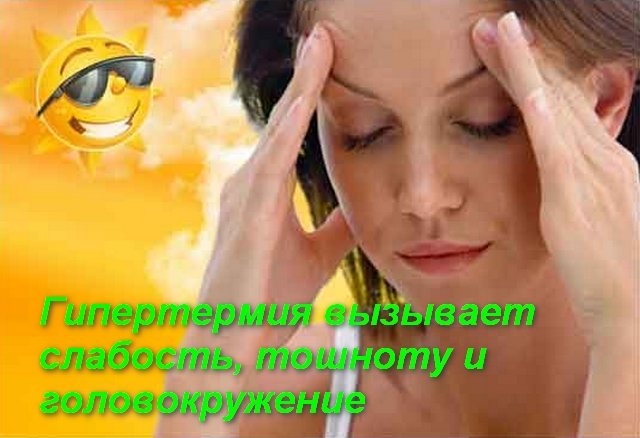
Medical assistance
The arriving doctors will determine whether the assistance provided was correct, whether it was able to neutralize hyperthermia, or whether the patient needs hospitalization.
In case of sunstroke, first medical aid is to prevent heart failure, respiratory failure and brain swelling.
Providing first aid is based on the following actions:
- The patient is administered glucose-saline solutions;
- They use drugs that normalize the activity of the cardiovascular system;
- If cold rubbing does not help, antipyretic medications are given;
- If necessary, use a lytic mixture, oxygen inhalation, and anti-seizure drugs.
If first aid for sunstroke and heatstroke was provided on time and correctly, and PMP in the form of administering medications was not needed, as a rule, severe consequences do not appear, but they still make themselves felt for some time.
Therefore, after first aid has been provided for heat and sunstroke, it is necessary to avoid being in unventilated rooms and under the rays of the sun. After all, after an attack, the victim develops a predisposition to repeated attacks.
Symptoms of sunstroke
The rays affect the head, which provokes dilation of the blood vessels in the brain. When a greater flow of blood enters, a bluish appearance of the nail plates and lips of the victim is observed.
The patient exhibits the following symptoms:
- feeling of weakness;
- sudden onset of dizziness, darkening of the eyes and loss of consciousness;
- presence of rapid breathing, shortness of breath, accelerated pulse;
- feeling of thirst and dry mouth;
- dilated pupils;
- redness of the facial area and body;
- temperature increase to high limits - 40-41 ° C;
- dry skin that feels hot;
- the occurrence of headaches;
- soreness and muscle spasms;
- feeling of a “cotton” body;
- nausea, which may result in vomiting;
- “cold” sweat is possible.
In children, the body is more exposed to overheating, and therefore symptoms appear quite quickly - after 6-7 hours. The child may complain of dizziness, apathy, nausea, and extraneous effects in the hearing organs. Parents may notice their baby is lethargic and sometimes complain of vision problems. In the absence of adequate help, the intensity of symptoms increases.
Appears:
- rapid breathing;
- frequent vomiting;
- complaints of headaches;
- temperature increase;
- darkening of the eyes and loss of consciousness.

Prevention measures
Despite the fact that help with heat and sunstroke most often brings relief and helps to avoid serious consequences, it is best to follow the rules of prevention:
- Try to leave the house in the heat in the morning or evening, especially to do physical work;
- Use clothes made from materials that have a natural base;
- Remember to cover your head with hats, caps or scarves;
- Eat right, drink plenty of fluids;
- Limit your use of alcohol and tobacco.
Following these simple rules will allow you to enjoy hot summer days without serious health consequences.
Kinds
Sunstroke in adults and children can lead to consequences of varying severity. It depends on the length of stay, the environment, the characteristics of the body and related factors. Mild impairment of the condition is accompanied by breathing problems, headaches, weakness, dilated pupils and nausea.
When the health disorder is of moderate severity, the victims begin to complain of weakness, headaches, nausea and vomiting. They have a feeling of being stunned. Patients often lose consciousness, they exhibit signs of unsteadiness and dysfunction of the vestibular mechanism. Breathing becomes disrupted, nosebleeds may occur, and the pulse quickens as the temperature rises to 39-40°C.
In severe condition, sunstroke can lead to redness of the face, and then to acquiring a tint of cyanosis, to disturbances of consciousness, even to coma. In some cases, the patient experiences involuntary urination, delirium and hallucinations are possible. Patients complain of tonic or clonic convulsions, and the temperature rises to 42°C.
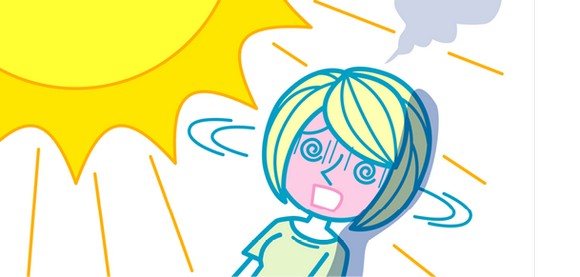
Diagnostics
It is easy to recognize hyperthermia if all the symptoms are present after intense physical activity or heat exposure. The human condition can be confused with an acute infectious disease of the brain and nervous system, but if the factors are present, heat stroke is suspected.

Heat injury causes body temperature to rise.
Methods for diagnosing heat injury include temperature monitoring outside the healthcare setting. If the patient is taken to the hospital on time, he is subjected to a series of laboratory tests - the level of urea, electrolytes and the prothrombin index are determined. Renal-liver tests may be required to assess organ health.
Complications
Sunstroke can provoke an exacerbation or the appearance of diseases that will cause a lot of trouble, even death. With active exposure to the sun, due to hyperemia, swelling of the meninges occurs, which is accompanied by overflow of the ventricles with cerebrospinal fluid.
The victim begins to complain of increased pressure, and dilation of the arteries occurs with possible rupture of small vessels. The result is malfunctions in the functioning of the nerve centers that determine life processes in the body.
As a result of sunstroke, adults and children may develop new or worsen chronic diseases. Moreover, the manifestation of the consequences may not be observed immediately, but after some time. Such pathologies include:
- diseases of an ophthalmological nature;
- disorders of the heart and blood vessels;
- neurological abnormalities, including stroke;
- coordination disorder, etc.
To prevent complications, it is necessary to follow preventive measures and seek help in a timely manner.

